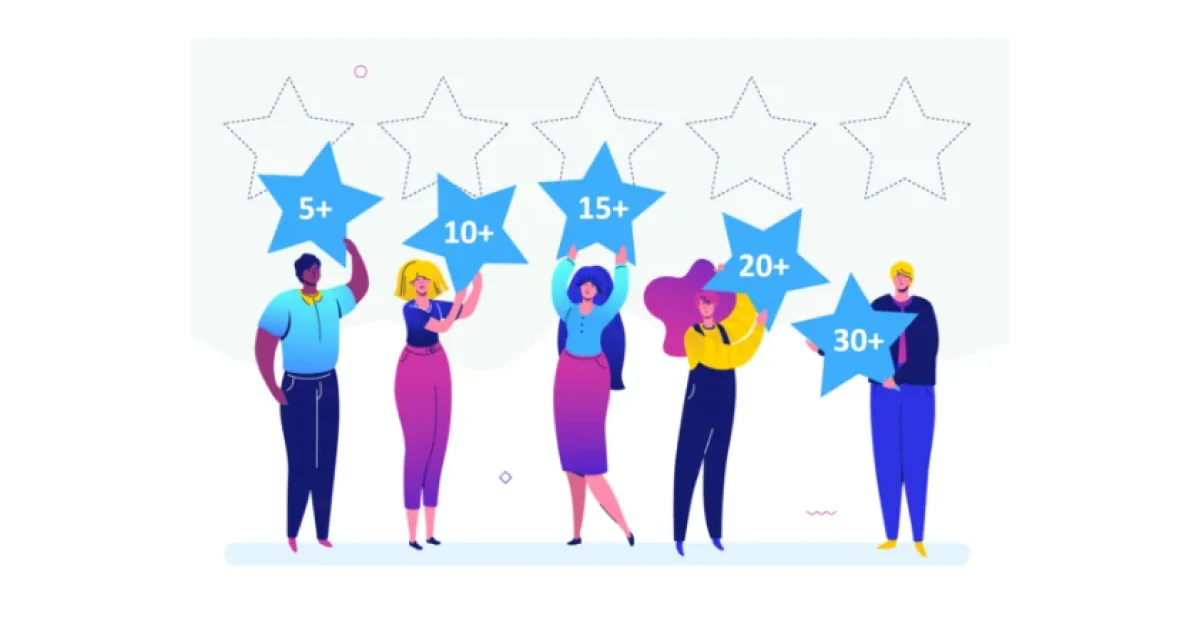What if you had a crystal ball that revealed which leads were most likely to convert into loyal customers? Enter lead scoring—the powerful methodology that allows you to identify and tag the most promising leads.
In this article, we are going to cover:
- What does lead scoring mean and its benefits
- Components of a lead scoring system
- 3 Lead scoring models – Traditional, Predictive, and Account-Based
- Best Practices for lead scoring
Are you ready? Let’s start right away!
Understanding Lead Scoring

Lead scoring is a systematic approach that helps businesses evaluate and prioritize leads based on their likelihood to convert into customers.
By assigning a numerical value or score to each lead, businesses can efficiently allocate their resources and focus their efforts on the most promising prospects.
Definition and Purpose of Lead Scoring
Lead scoring involves the process of assigning points or scores to leads based on specific criteria, such as demographic data, behavioral patterns, engagement levels, and indicators of fit and intent.
The purpose of lead scoring is to separate high-quality leads from low-quality ones, allowing sales and marketing teams to prioritize their actions and resources.
Key Benefits of Lead Scoring
1. Enhanced efficiency
Lead scoring streamlines the lead management process by providing a structured framework to evaluate leads. It helps teams avoid wasting time on leads with low conversion potential and focus their efforts on leads that are more likely to convert.
2. Improved sales-marketing alignment
Lead scoring encourages collaboration between sales and marketing teams. By establishing clear criteria for lead qualification, both teams can align their efforts and work towards common goals, resulting in improved lead handoff and overall conversion rates.
3. Better conversion rates
By targeting leads that are most likely to convert, businesses can optimize their conversion rates. Lead scoring enables personalized and targeted communication, ensuring that leads receive relevant content and offers based on their specific needs and interests.
4. Resource optimization
With limited resources, it’s crucial to allocate them effectively. Lead scoring allows businesses to allocate their time, budget, and manpower efficiently by focusing on leads that have the highest potential for conversion, resulting in improved ROI.
Components of an Effective Lead Scoring System
To implement an effective lead scoring system, businesses need to consider several key components:
- Demographic and Firmographic Data: Factors such as industry, company size, job title, and geographic location can provide insights into a lead’s fit and potential value to the business.
- Behavioral Data: Tracking a lead’s interactions, such as website visits, content downloads, email opens, and social media engagement, can indicate their level of interest and engagement with the business.
- Engagement Levels: Assessing the frequency and depth of a lead’s interactions helps determine their level of engagement and indicates their readiness for further nurturing or sales engagement.
- Fit and Intent Indicators: Evaluating a lead’s fit based on predefined ideal customer profiles (ICPs) and assessing their intent through specific actions, such as requesting a demo or pricing information, provides valuable signals for lead scoring.
Understanding these components and leveraging relevant data helps businesses create a comprehensive lead scoring system that accurately predicts lead quality and conversion potential.
By embracing lead scoring, businesses can unlock the power of data-driven insights to make informed decisions, optimize their lead management process, and achieve higher conversion rates.
In the next section, we will explore different lead scoring models to enhance your understanding of this valuable methodology further.
Lead Scoring Models

A. Traditional Lead Scoring Model
The traditional lead scoring model is based on predefined criteria and assigns points to leads based on factors such as job title, company size, industry, and engagement activities.
The model typically relies on a fixed set of rules and weights assigned to each criterion.
While this model offers a straightforward approach, it may lack flexibility and struggle to adapt to evolving market dynamics and changing customer behaviors.
Pros of Traditional Lead Scoring Model
- Simple and easy to implement
- Provides a starting point for lead qualification
- Allows for consistent evaluation of leads
Cons of Traditional Lead Scoring Model
- Limited adaptability to changing market conditions
- May not capture nuanced differences between leads
- Relies heavily on predefined criteria rather than real-time data
B. Predictive Lead Scoring Model
The predictive lead scoring model leverages advanced analytics and machine learning algorithms to predict lead quality and conversion likelihood.
This model considers a broader range of data points, including historical lead data, behavioral patterns, firmographics, and external data sources.
By analyzing patterns and correlations, the predictive model identifies factors that contribute to lead conversion, enabling businesses to prioritize leads more accurately.
Benefits of Predictive Lead Scoring Model
- Incorporates large volumes of data for more accurate predictions
- Adapts to changing market dynamics and customer behaviors
- Identifies hidden patterns and factors that impact lead conversion
- Provides real-time insights and scoring updates
Challenges of Predictive Lead Scoring Model
- Requires access to comprehensive and quality data
- Implementation may involve technical expertise and resources
- Requires continuous monitoring and refinement to maintain accuracy
C. Account-Based Lead Scoring Model
The account-based lead scoring model focuses on evaluating the potential value of an entire account rather than individual leads.
This model aligns with account-based marketing (ABM) strategies, where businesses target specific accounts and tailor their marketing and sales efforts accordingly.
Account-based lead scoring takes into consideration factors such as account size, industry, revenue potential, and engagement activities across multiple contacts within the account.
Considerations for Account-Based Lead Scoring Model
- Define and prioritize target accounts based on strategic goals and fit with ideal customer profiles
- Assess the engagement levels and interactions across contacts within the target accounts
- Customize scoring criteria based on the unique needs and behaviors of the targeted accounts
- Collaborate closely with sales teams to align account-based lead scoring efforts
Limitations of Account-Based Lead Scoring Model
- Requires effective collaboration between marketing and sales teams
- May not be suitable for businesses with a large volume of small or diverse accounts
- Account-level data may be limited or challenging to gather for certain industries or markets
By understanding the different lead scoring models, businesses can choose the approach that aligns best with their goals, resources, and target audience.
In the next section, we will explore best practices for implementing lead scoring effectively to maximize its benefits in lead qualification and conversion optimization.
Best Practices for Lead Scoring

1. Building a Solid Foundation
To ensure the effectiveness of your lead scoring efforts, it’s essential to establish a solid foundation. Consider the following best practices:
Define your Ideal Customer Profile (ICP): Clearly define the characteristics and attributes of your ideal customer. This includes demographic, firmographic, and behavioral factors that indicate a good fit for your product or service.
Establish Clear Criteria for Marketing Qualified Leads (MQLs) and Sales Qualified Leads (SQLs): Collaborate with both marketing and sales teams to define the specific criteria that distinguish MQLs from SQLs. This alignment ensures a seamless handoff and more accurate lead qualification.
2. Data Collection and Integration
Effective lead scoring relies on comprehensive and accurate data. Implement the following best practices for data collection and integration:
Gather Relevant Data from Various Sources: Collect data from multiple touchpoints, including website analytics, CRM systems, marketing automation platforms, and customer interactions. This comprehensive data ensures a holistic view of leads.
Integrate Data to Create a Comprehensive View: Integrate the data collected from different sources to create a unified and comprehensive lead profile. This integration enables a deeper understanding of leads and helps identify patterns and trends.
3. Scoring Criteria Development
Developing scoring criteria is a crucial aspect of lead scoring. Consider these best practices:
Identify and Assign Point Values to Different Lead Attributes: Determine which lead attributes are most indicative of conversion potential and assign appropriate point values to each attribute. This allows for a more accurate scoring system.
Prioritize Scoring Criteria Based on Impact: Some attributes may have a higher impact on lead quality and conversion likelihood. Prioritize these criteria accordingly in your scoring model to ensure they carry appropriate weight in the overall score.
4. Continuous Evaluation and Refinement
Lead scoring is not a set-it-and-forget-it process. Continuously evaluate and refine your scoring model using the following best practices:
Regularly Assess the Effectiveness of Your Scoring Model: Monitor the performance of your scoring model by analyzing conversion rates and lead-to-customer ratios. Identify areas of improvement and make necessary adjustments to enhance accuracy.
Adjust Scoring Criteria and Weightings: Based on the results and feedback, refine your scoring criteria and weightings. Adapt to changes in market dynamics, customer behaviors, and business objectives to maintain a relevant and effective scoring model.
5. Automation and Alignment
Automation and alignment between marketing and sales teams are essential for successful lead scoring. Follow these best practices:
Utilize Marketing Automation and CRM Systems: Leverage marketing automation and CRM systems to automate lead scoring processes and track lead interactions. These tools provide scalability, efficiency, and real-time scoring updates.
Foster Collaboration Between Marketing and Sales Teams: Facilitate regular communication and collaboration between marketing and sales teams to ensure alignment on lead scoring criteria, lead handoff processes, and feedback loops for continuous improvement.
Implementing these best practices enables businesses to optimize their lead scoring efforts, improve lead qualification accuracy, and drive better conversion rates.
Final Thoughts
Lead scoring is a vital strategy that enables businesses to effectively prioritize and qualify leads, leading to improved conversion rates and sales outcomes.
By defining an ideal customer profile, establishing clear criteria, collecting comprehensive data, and implementing the appropriate scoring model, companies can optimize their lead management process.
Key takeaways:
- Lead scoring allows businesses to evaluate leads based on predetermined criteria, assigning scores to prioritize efforts and resources.
- Different lead scoring models, such as traditional, predictive, and account-based, offer unique benefits and considerations.
- Best practices include building a solid foundation, collecting and integrating data, developing scoring criteria, continuous evaluation and refinement, and fostering automation and alignment.
- Lead scoring enhances efficiency, sales-marketing collaboration, conversion rates, and resource allocation.
By implementing these best practices, businesses can unlock the full potential of their leads, drive growth, and achieve sustainable business success.
With lead scoring, companies can make data-driven decisions, focus on high-quality leads, and maximize their overall sales and marketing efforts. Start leveraging lead scoring today to propel your business forward.


